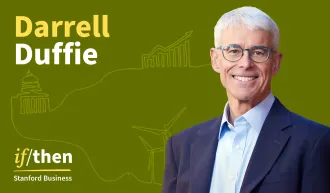Coursera CEO Richard Levin: Democratizing Learning Takes Time
Head of online education company discusses the future of higher education.
November 10, 2014

Coursera CEO Richard Levin | Natalie White
When Silicon Valley CEOs talk about their companies, they often use the word “disrupt,” as in an idea or technology that will turn an industry inside out. But not Richard Levin.
The former president of Yale University and now CEO of Coursera, a high-profile online education company based in the heart of Silicon Valley, used the word ‘‘disrupt’’ or “disruption” only five times during an hour-long interview. And, when he did, it wasn’t to herald a tectonic shift in higher education.
“It’s going to be a long time before there’s a really revolutionary disruption in traditional education. The idea that we’re going to completely disrupt the educational system as opposed to just reaching more people who are outside it or improving the experience of those who are inside it is probably just a little early,” he told a group of Stanford Graduate School of Business students at a View From the Top talk in October. Nonetheless, Levin says that changes are transforming online education, with a renewed emphasis on broadening its reach beyond its traditional audience of relatively affluent college graduates. Just seven years ago, online education at Yale consisted of “a camera in the back of the classroom,” and the target audience was relatively small. “Yale, Stanford, and Oxford were putting on these great courses targeting their alumni, but we weren’t getting the enrollments to sustain it,” says Levin.
Powered by plentiful bandwidth, the rise of mobile technology, and more sophisticated, complex technological tools, Coursera and its competitors are working to attract a broader and more diverse audience. Nearly one-third of Coursera’s users watch videos of lectures on mobile devices, and by the middle of next year all of the company’s content will be available on tablets and smartphones. “Everything you can do on a computer you’ll be able to do on the phone,” Levin says.
Going mobile represents more than just a shift in personal technology. Levin says it democratizes learning and is one of his answers to critics who say online education is largely confined to affluent white males instead of the more economically and geographically diverse audience it originally aspired to reach.
Mobile phones are more available than PCs in developing countries. “We are using various tools, like creating live learning hubs in U.S. Embassies around the world, so people who don’t have the bandwidth can actually come and get access to it and have sort of mentored discussion groups,” he says.
“This is an amazing opportunity to democratize higher education,” Levin says. And while he says that most college leaders say that the reason they’re backing online education is to improve on-campus education, Levin sees it differently. “To me, that’s like saying the automobile, when it was invented, was a good tool for going to the grocery store. The real point is that the scale of online education sets it apart.”
With more than 10 million users, Coursera’s scale is impressive.
“The idea that a single Stanford professor or a single Yale professor would teach an online class for 8 or 10 weeks and teach more students in that class than they would teach in a 30- or 40-year teaching career at home is amazing,” Levin says. Founded in 2012, Coursera now offers 859 courses from 115 universities with $85 million in backing from venture capital firms.
His company capitalizes on the same resources that universities invest in: great teachers becoming masters of a subject. But in this case, the expertise is offered to anyone for free. “I mean it’s truly revolutionary. And that’s what’s exciting about it,” Levin says.
That business model isn’t going to change any time soon, he says. “Our monetization strategy is basically that education is free, but if you want verification and want to get certified as having completed the course satisfactorily, that costs $50.” Coursera offers discounts to students in some developing countries.
Coursera’s founders have strong ties to Stanford’s Computer Science Department, so it’s not surprising that the company is adopting complex new technologies such as Apache Cassandra, a powerful open source database, and Swift, a parallel programming language. Andrew Ng, the company’s chairman is an associate professor of computer science at Stanford. Daphne Koller, the president of Coursera, is also a professor of computer science at Stanford. Her main research interest is in developing and using machine learning and probabilistic methods to model and analyze complex domains.
Does Coursera threaten the primacy of elite universities like Stanford and Yale? Not yet, says Levin. “If you want to master content, Coursera is a great tool. If you want to do a deep dive into forming relationships that are going to mean something to you for a lifetime and learn the soft skills and interpersonal skills and skills of leadership and teamwork that you need in life, there’s nothing like these great universities,” he says.
But lower-tier schools that have no student housing could have a problem. “People commute to a community college to take a course, and they go home. Could a Coursera replace that? I think the answer is yes, it could.”
Levin’s next goal: stronger partnerships with global businesses. “I’d love to see companies like PricewaterhouseCoopers posting recommendations for 5 or 10 of our courses. I think we’ll get there in the next year.”
For media inquiries, visit the Newsroom.
Explore More

Teaching Soft Skills Can Help Women Stay in Science and Tech Jobs

How Race Influences and Amplifies Backlash Against Outspoken Women



